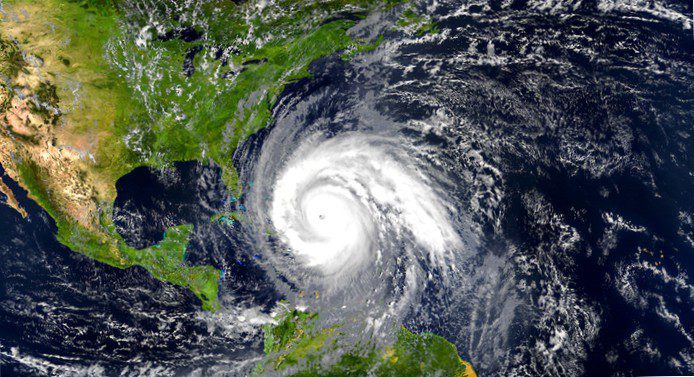
Insurance-linked securities play increasingly important role in managing some of the world's most pressing risks. John Seo of GAM Investments questions whether and how insurance-linked securities and ESG criteria fit together.
The insurance-linked securities (ISL) market emerged in the late 1990s after two events in the U.S. – Hurricane Andrew in 1992 in the Miami area and the 1994 Northridge earthquake in the Los Angeles area – nearly caused the collapse of the Florida and California insurance markets. These catastrophes created an opportunity for capital market investors to provide new capital to the re/insurance industry. Since then, insurance-linked securities have played an increasingly important role in stabilizing insurance markets by helping to spread risks across a larger and deeper pool of capital.
Environmental hurricane risk
John Seo, manager of GAM Investments' ILS strategies, writes in his statement on ISL's sustainability factors that environmental aspects – i.e., the "E" In ESG (environmental, social, governance) – inherently closely related to insurance-linked securities. One of the biggest investment risks in the re/insurance industry is the weather. As a result, the ILS market, like the insurance and reinsurance markets it supports, is at the forefront of monitoring changes in weather extremes and their impact on economies. Each U.S. hurricane catastrophe bond – arguably the best-known ILS facility – reports the risk of the bond with and without the impact of factors such as increased sea surface temperature to assess potential climate change impacts on hurricane activity.
Seo explains, "Unlike long-duration investments such as stocks, long-duration bonds and real estate, insurance-linked securities tend to have short maturities, with maturities usually ranging from one to five years. As a result, their returns can be adjusted on relatively short notice as new information about the frequency and severity of weather events becomes available. This gives capital market investors forward-looking, market-based information on the cost of weather risks and thus the cost of climate change. Investors provide capital to hedge these risks – in return, they have a greater chance of receiving adequate compensation in return."
The state of Florida is one of the largest customers for property catastrophe insurance in the world. The current industry estimate for insured losses from a hurricane hitting a major city like Miami is $250 billion, according to Seo (for a once-in-200-years event). At the same time, the total capital base of the traditional reinsurance industry is an estimated US$350 billion. Although this single event would not require the entire reinsurance capital base, a once in 200 year event would still throw the global re/insurance market into chaos and would have a significant impact not only on the local affected population, but likewise on insurance costs overall worldwide, as Seo explains. ISL expert estimates that the entire global traditional reinsurance market covers only $40 billion of losses for a single event in Florida. The volume of insurance-linked securities increased by an estimated $50 billion in additional hurricane coverage available to insurance companies and reinsurers active in Florida in recent years.
Governance helps increase transparency in aid distribution
"Insurance-linked securities enable insurers and regulators to efficiently manage systemic catastrophe risks before events occur, rather than inefficiently responding to them after they have occurred. A major advantage of governance in disaster response preparedness is greater transparency and accountability for the use of disaster relief funds: In traditional post-event disaster response, the unwritten law is that the situation often has to deteriorate before aid is mobilized", Seo explains. But even then, the amounts and conditions under which aid reaches recipients are uncertain, making plans to deploy funds difficult and inefficient in practice, he said. However, pre-arranged financing with transparent triggering factors ("triggers") for the flow of funds can significantly increase the effectiveness of disaster financing and planning.
John Seo believes ESG factors are critical to long-term investment proposition and performance in the insurance-linked securities asset class. ESG factors are expected to create opportunities for future market growth while providing incentives to ensure appropriate and sustainable price development of financial investments. The expert explains that ESG considerations can be taken into account by reviewing all insurance-linked securities as soon as they are announced. ESG ratings in terms of overall structure, rationale and quantitative elements are possible, he said.
Valuable contribution to the economy and society
Insurance-linked securities are playing an increasingly important role in managing some of the world's most pressing risks. According to Seo, "The attractive risk-adjusted returns of this asset class demonstrate the value of their contribution to the protection, stability and growth of the global re/insurance market, and the benefits they can therefore offer economies and societies around the world. Therefore, we expect that the natural and ongoing alignment of insurance-linked securities with positive ESG criteria will continue to protect investors' portfolio returns and improve them through the continued growth of this asset class in the coming years."